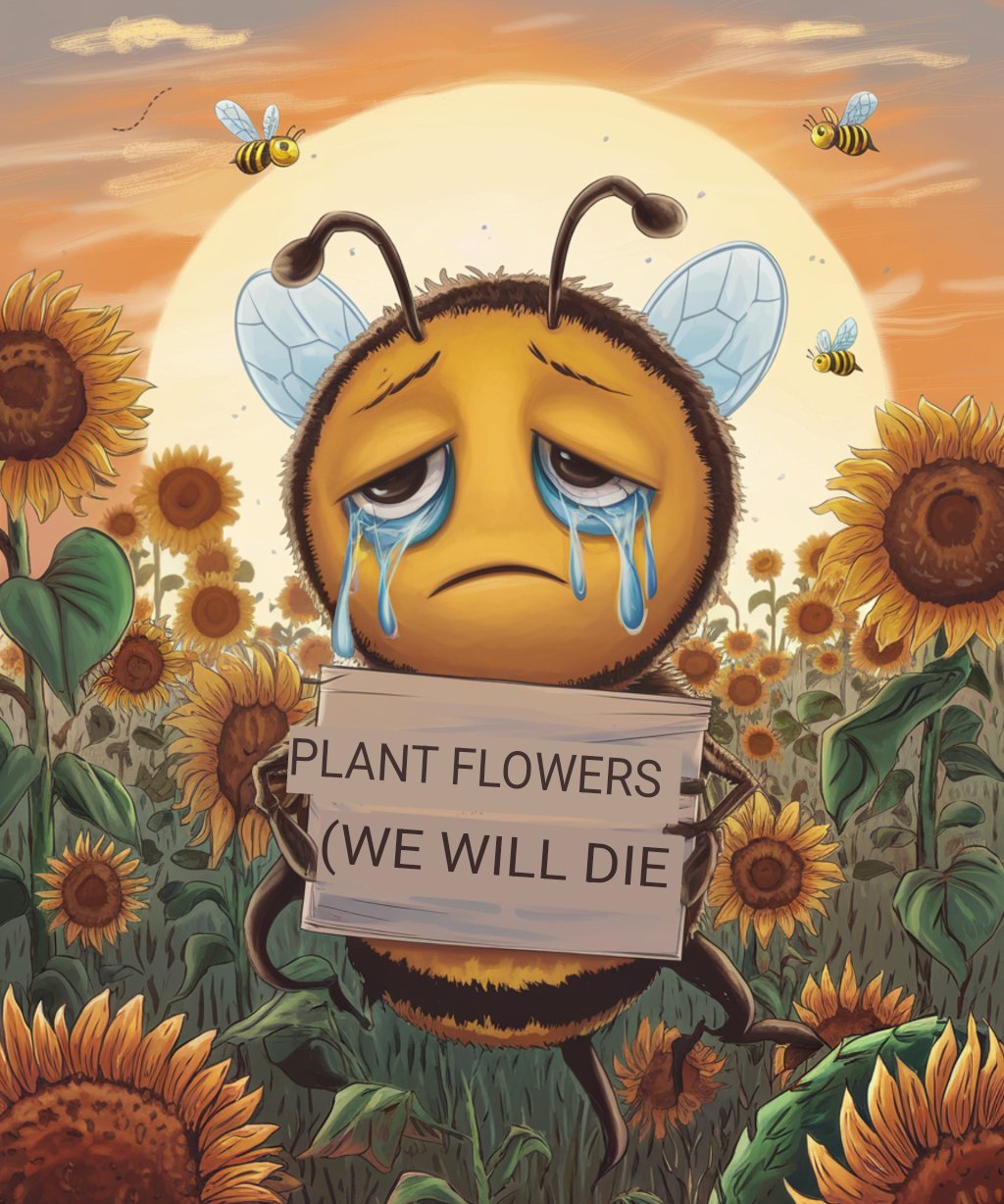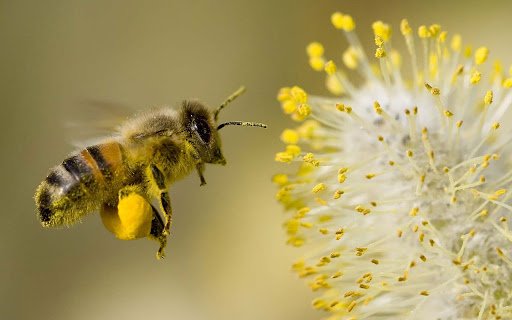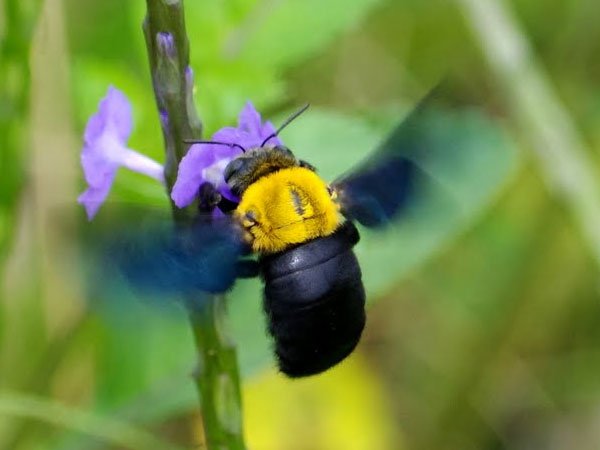Bees are more than just buzzing insects that flit from flower to flower—they are essential to the health of our planet and our survival. These tiny pollinators play a vital role in maintaining ecosystems, securing global food supplies, and supporting biodiversity. Yet, their populations are declining at alarming rates due to habitat destruction, climate change, pesticide use, and disease.
What would happen if bees disappeared? The consequences would be catastrophic, affecting everything from agriculture to global economies, and even the air we breathe. In this article, we’ll explore the importance of bees, the threats they face, and what we can do to protect them before it’s too late.
## 1. The Crucial Role of Bees in Nature

Bees are responsible for pollinating approximately 75% of the world’s flowering plants and around 35% of global food crops. Without them, many of the foods we take for granted—fruits, vegetables, nuts, and even coffee—would become scarce or disappear altogether.
### **How Pollination Works**
Pollination is the process by which pollen is transferred from the male part of a flower (stamen) to the female part (stigma), allowing plants to reproduce. While some plants rely on wind or water for pollination, the majority depend on insects, with bees being the most efficient pollinators.
When a bee visits a flower to collect nectar, pollen sticks to its body. As it moves to the next flower, it inadvertently transfers the pollen, enabling fertilization. This process ensures the growth of fruits, vegetables, and seeds, making bees critical players in food production.
### **The Link Between Bees and Human Survival**
Bees do more than just provide food for humans. Their role in pollination supports entire ecosystems by enabling plant growth, which in turn provides oxygen, absorbs carbon dioxide, and sustains wildlife. Without bees, plant populations would decline, leading to cascading effects on the environment and food chains.
## 2. What Happens If Bees Vanish?

If bees were to disappear, the world would face a chain reaction of devastating consequences, impacting agriculture, biodiversity, and the economy.
### **A Global Food Crisis**
Without bees to pollinate crops, many of our favorite foods would become scarce or disappear entirely. Crops such as apples, almonds, berries, cucumbers, and avocados rely heavily on bee pollination. A decline in these crops would lead to:
– **Food shortages**: Essential crops would struggle to reproduce, reducing food availability worldwide.
– **Higher food prices**: With limited supply, the cost of fruits, vegetables, and nuts would skyrocket.
– **Nutritional deficiencies**: Many nutrient-rich foods, particularly those high in vitamins, antioxidants, and fiber, rely on bees for production. Without them, our diets would become less diverse and less healthy.
### **Loss of Biodiversity**
Bees help maintain biodiversity by pollinating a vast array of plants. If bees vanish:
– Entire ecosystems would collapse, as plants that depend on pollination would decline.
– Animals that rely on these plants for food and shelter would also suffer, leading to a loss of wildlife.
– Forests, meadows, and gardens would become less diverse, affecting not just plants but entire food chains.
### **Economic Collapse in Agriculture**
The agriculture industry heavily depends on bees. If they disappear:
– Farmers would need to rely on artificial pollination, an expensive and inefficient alternative.
– Crop yields would decline, leading to financial losses for farmers and food producers.
– Countries that rely on agricultural exports would face severe economic downturns.
### **Impact on Medicine and the Environment**
Many medicinal plants depend on pollination, and without bees, traditional and modern medicine would suffer. Additionally:
– Trees and plants, which play a role in absorbing carbon dioxide and producing oxygen, would struggle to reproduce.
– This could contribute to climate change, deforestation, and declining air quality.
## 3. Why Are Bees Declining?

Bees are disappearing due to a combination of human activities and environmental changes. The primary threats include:
### **1. Habitat Loss**
Urbanization, deforestation, and industrial farming are destroying natural habitats where bees live and forage. As wildflower meadows, forests, and hedgerows disappear, bees struggle to find food and nesting sites.
### **2. Pesticides and Chemicals**
The widespread use of pesticides, particularly neonicotinoids, has been linked to bee deaths. These chemicals disrupt bees’ nervous systems, making it difficult for them to navigate, forage, and reproduce.
### **3. Climate Change**
Rising temperatures, unpredictable weather patterns, and habitat destruction due to climate change are making it harder for bees to survive. Flowers are blooming at the wrong times, food sources are dwindling, and extreme weather events are disrupting bee colonies.
### **4. Diseases and Parasites**
Bee populations are under attack from various parasites and diseases. The **Varroa mite**, a deadly parasite, weakens bees by feeding on their bodily fluids, making them more susceptible to infections.
### **5. Monoculture Farming**
Industrial agriculture often involves growing large-scale single-crop fields, which lack biodiversity. This deprives bees of a diverse diet and exposes them to harmful chemicals, weakening their immune systems.
## 4. How Can We Protect Bees?
The good news is that there are many ways we can help protect and restore bee populations. From small individual actions to large-scale policy changes, every effort counts.
### **1. Plant More Flowers**
One of the simplest and most effective ways to support bees is by planting flowers rich in nectar and pollen. Choose a variety of native, bee-friendly plants that bloom throughout the year to provide continuous food sources.
### **2. Reduce or Eliminate Pesticide Use**
Avoid using harmful pesticides and opt for organic or bee-friendly alternatives. Encourage local farmers and policymakers to promote sustainable farming practices that protect pollinators.
### **3. Support Local Beekeepers**
Buying honey and other bee products from local, ethical beekeepers helps support sustainable beekeeping practices that prioritize bee health over profit.
### **4. Create Bee Habitats**
Leaving patches of wildflowers, creating bee hotels, and preserving natural areas in gardens and parks can provide essential nesting sites for bees.
### **5. Raise Awareness and Advocate for Change**
Spreading knowledge about the importance of bees and supporting policies that protect pollinators can lead to meaningful change. Advocate for:
– Banning harmful pesticides
– Protecting natural habitats
– Promoting sustainable farming practices
### **6. Reduce Your Carbon Footprint**
Since climate change affects bee populations, reducing carbon emissions by using renewable energy, consuming locally sourced food, and minimizing waste can indirectly help save bees.
## 5. The Future of Bees is in Our Hands

If bees disappear, we lose much more than honey—we lose a crucial part of the ecosystem that sustains life on Earth. Their survival is directly linked to our own, and protecting them means securing a future for generations to come.
Every flower we plant, every pesticide we avoid, and every awareness campaign we support makes a difference. By taking action today, we can ensure that these essential pollinators continue to thrive, preserving biodiversity, food security, and the environment.
The next time you see a bee buzzing around a flower, remember: their survival is our survival. The question is—will we act before it’s too late?
